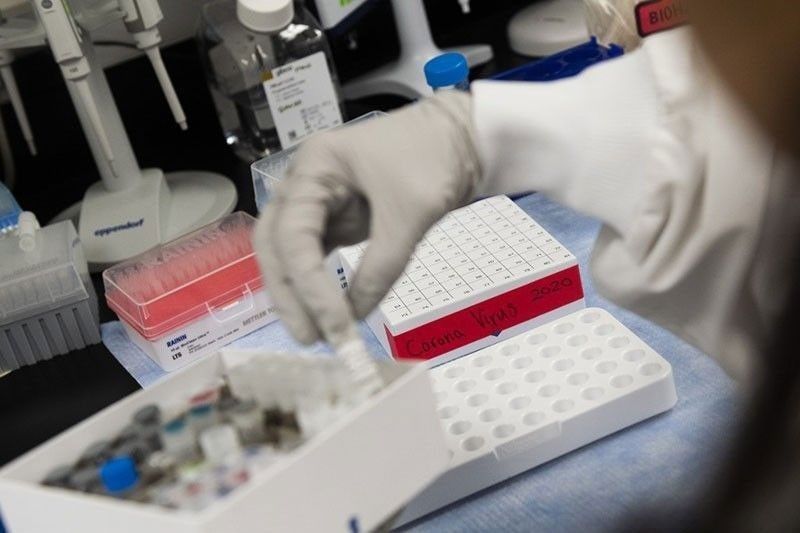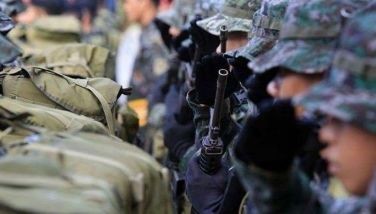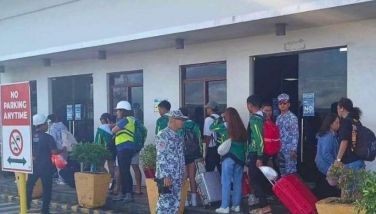Realistic timeline for COVID-19 vaccination by Q2 2021

MANILA, Philippines — A realistic timeline for the Philippines to start small population vaccination against COVID-19 is by the second quarter of 2021 at the earliest, even if the Philippines’ Food and Drug Administration (FDA) will issue any of the leading vaccine developers an emergency use authorization (EUA).
Dr. Jaime Montoya, executive director of the Department of Science and Technology-Philippine Council for Health Research and Development (DOST-PCHRD), pointed out that aside from the three US pharmaceutical giants that are leading the global race to develop a COVID-19 vaccine – Moderna, Pfizer-BioNTech and AstraZeneca – first distributing their vaccines in their home country, the Philippines will have to join a crowd of other nations putting in orders for their share of the vaccine.
Montoya, in a virtual interview on “The Chiefs” One News Wednesday night, said that once the US FDA gives an EUA to the vaccine developers, “then they will have the first crack on the vaccine obviously coming from their local manufacturers, like Pfizer-BioNtech, and maybe Moderna or even AstraZeneca.”
Next, he said, are the rest of the world.
“That’s why our estimate is, considering the global supply and demand, we will be having (the vaccines) maybe the earliest is by the second quarter of next year,” Montoya told The Chiefs.
“Because most of the companies have already commitments from the other countries in terms of supply,” Montoya added.
The three multinational pharmaceutical giants earlier disclosed plans to get an EUA from the US FDA.
Montoya said the pharmaceutical giants can also seek a similar EUA from the Philippines’ FDA.
“The President has already approved the proposal to empower the FDA to also be able to give emergency use authorizations,” Montoya said.
Montoya said that the grant of an EUA involves the vaccine developer only being required to submit half of the patient safety data of the whole patient population.
The EUA process, it was learned, is a shorter process than the regular route of filing for Phase 3 clinical trials in the country, undertaking the Phase 3 clinical trials, getting FDA approval for mass vaccination and then holding the mass vaccinations.
Another way for the country to secure a supply of a successful COVID-19 vaccine is through the COVAX Facility organized by the World Health Organization (WHO).
However, Montoya said that the Philippine government was still in negotiations to join the facility.
“The COVAX facility is another mechanism. But the earliest that we can get this is actually second quarter of next year,” Montoya said.
“The COVAX is a mechanism for procurement to provide equitable access to low, low-middle income countries to which the Philippines belongs,” Montoya said.
Montoya said the COVAX Facility can only supply a set three percent of a country’s population, so that means the Philippines, with its more than 100 million population, can get around three million vaccines.
“At least three percent of the national requirement. If you’re talking about 100 million, I’m just rounding it off – three million – it will be made available by next year, that’s the second quarter I’m talking about,” Montoya said.
“But not for the rest. That will really happen, maybe at the earliest, 2021,” Montoya said.
He added that it will be “partially subsidized as well.”
He said that has been committed. “And they promised that three percent as the initial tranche will be given to the Philippines if we join the COVAX facility. That’s still being finalized.”
Montoya pointed out that they were all mainly working on “moving targets” and moving deadlines because there were so many “unknowns” even in the efficacy of the COVID-19 vaccines being developed by the major pharmaceuticals.
Montoya stressed that the efficacy of a vaccine is also a determinant of the herd immunity target of mass vaccinations.
He noted that the President had earlier mentioned that he wanted some 70 million of the population to receive the vaccine.
“This is just based on my opinion and this based on what I know. Based on the information that we have on herd immunity, that will be dependent on how effective the vaccine is, we’re talking of efficacy,” Montoya said.
“The numbers that Pfizer is talking about – 95 percent; 94.5 percent for Moderna and you know about 90 percent also for AstraZeneca, a low of 62, depending on what population you’re looking at – that will determine how much of the herd immunity would be required,” Montoya said.
“Because the premise is, that if the vaccine is at least 90 percent effective, the population that have to be vaccinated to achieve herd immunity will be lower,” he said.
“As compared to if you’re using a vaccine with only 50 percent efficacy, means that you have to vaccinate everyone to achieve herd immunity,” Montoya added.
He said 70 million targeted for innoculation is a ballpark figure. “Because the range is actually anywhere from 50 to 80 percent. So 70 percent, it’s like, whether you’re in the low side or the high side in terms of efficacy, maybe you will hit the herd immunity but, as I said, how the vaccine will behave in the general population is still a question mark,” Montoya said.
- Latest
- Trending






























